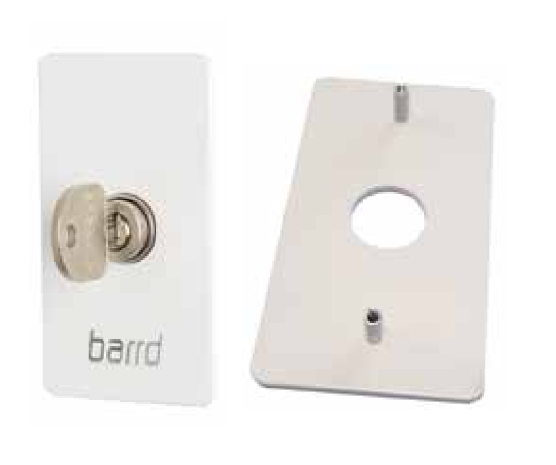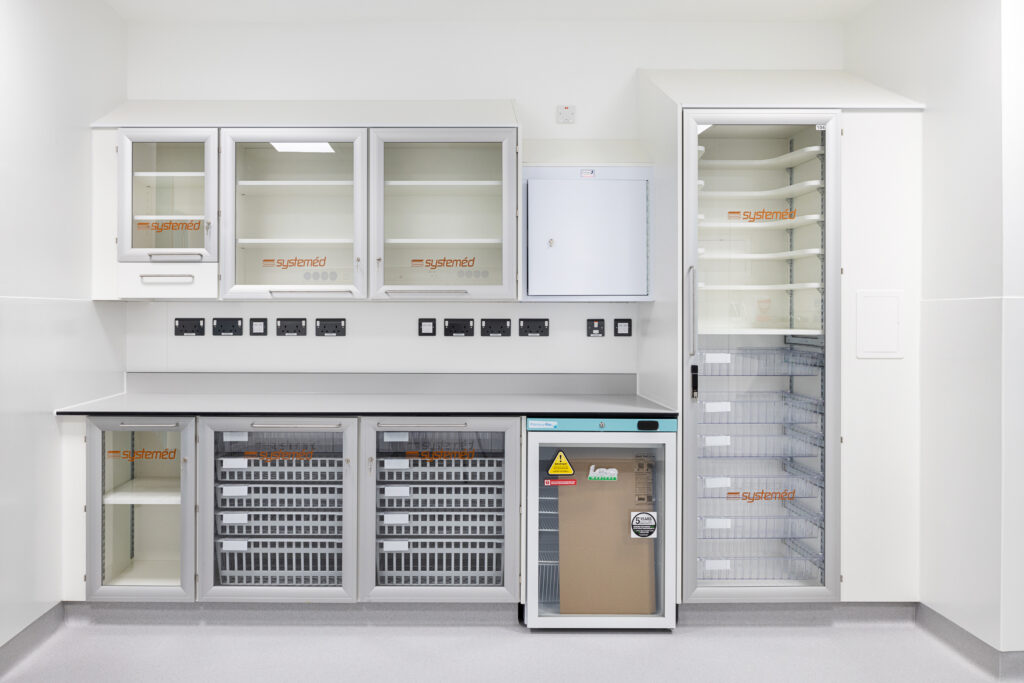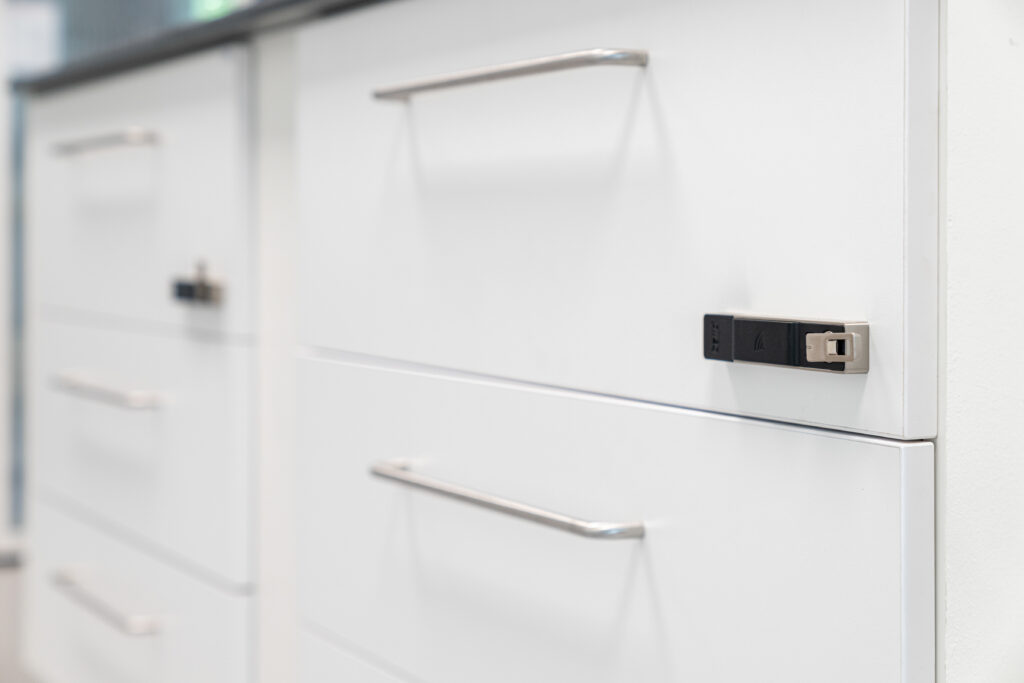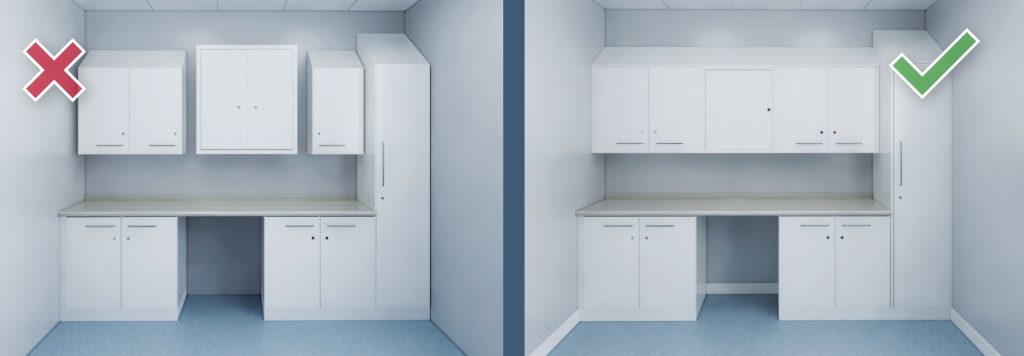Ensuring the safe and secure storage of medicines in clinical settings is essential to reduce waste, prevent medication errors and safeguard patients and staff. There are numerous NHS regulations, British Standards, and guidance documents to help achieve this.
Key Regulations and Standards
Several overlapping publications set out requirements and recommendations for medicine storage in healthcare facilities. BS2881 and the Misuse of Drugs (Safe Custody) Regulations 1973 and HBN14-02 are key documents relating to this important subject.
BS2881 outlines three security levels for drug cabinets and the recommended criteria to resist attack, with Level 1 as the Minimum standard. It mandates that cabinets must be able to withstand a 5-minute attack from someone armed with a knife and resist a downward force of 980 newtons, ensuring robust construction and secure fixings.
HBN14-02 is a more recent document that provides updated guidance and recommends that medicine cabinets should be made of metal in order to comply with the requirements set out in BS2881 on new projects. The Barrd® locking plate and through bolt fixing system can be used as an alternative to strengthen wood-based cabinets when it is not practical or cost effective to switch to a metal-based cabinet.

The Misuse of Drugs (Safe Custody) Regulation 1973 relates more to cabinet construction and specification for the storage of controlled drugs. Including stating that there should be nothing on the outside of a cabinet indicating that drugs are kept inside.

Design and Environment Considerations
Health Building Notes (HBNs) offer guidance on designing healthcare facilities, specifying what is legally required, recommended or permitted. For instance, HBN 00-03: Clinical and Clinical Support Spaces advises on room layouts for medicine storage and preparation areas.
Key design considerations include:
- Storage Capacity: Determined by regulatory requirements, risk assessments, local policies, and clinical knowledge.
- Temperature Control: Ambient medicine storage areas should maintain temperatures between 8°C and 25°C, while refrigerated medicines require 2°C to 8°C.
- Lighting: A minimum of 500 Lux is recommended for general storage areas, with 1000 Lux task lighting for preparing medications.
- Worktop Space: A typical 24-bed ward should have at least 2m² of preparation space.
Security Measures and Locking Systems
Cabinet security is paramount. Cabinets that comply with BS2881 Level 1 are to be used for the storage of general medicines, while levels 2 and 3 provide enhanced protection for Controlled Drugs. Level 2 is normally sufficient for the Hospital environment with most areas being continuously manned.
The ability to work away at a cabinet for an extended period of time without detection requires greater security and resistance to attack criteria. Level 3 provides standards guidance for this situation.

Controlled Drugs cabinets must be fixed securely to walls. Ideally solid masonry or concrete with at least four points by means of rag bolts. For partition walls the cupboard should be fixed by bolts passing through the wall to include as many internal studs as possible between the bolts. Plus locks must meet BS3621 standards, featuring at least 5 leavers and 1000 ley differs, with anti-drilling and anti-picking mechanisms.
For controlled drugs:
- Multiple keys should be avoided to limit access.
- Keys should not be able to be removed unless the cupboard is locked
- Outer cabinets can conceal smaller controlled drugs safes for added security
- Alarm lights indicating an open safe should be positioned over the door entrance or on a central Nurse base and visible from outside the room

HNB14-02 advises that for non-controlled medicines, electronic access cards are preferred over traditional keys with the ability to provide audit trails. Keypads accessed with shared codes are discouraged due to security risks.
Care Quality Commission Inspections – Be prepared
Safe, fit for purpose medicine storage is an important focus of CQC inspections which can happen at any time without notice. Following the regulations set out in this article can help you be prepared.
At Stirling we offer practical support to ensure you are inspection ready and compliant. From assessing your current set-up and supplying industry leading solutions, ensuring you are ready and confident when inspection day comes.